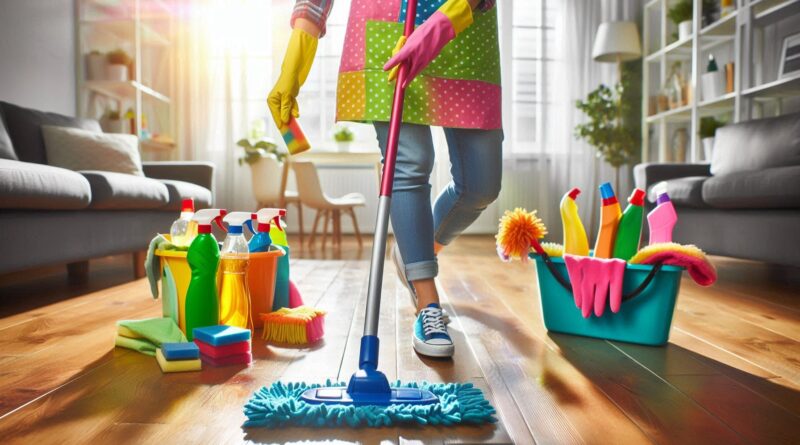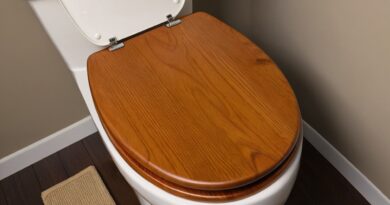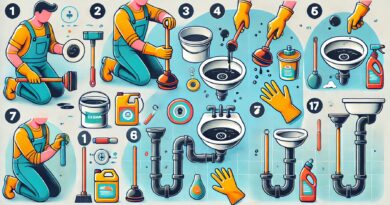How to use caustic soda for cleaning floor
Step-by-Step Instructions: How to Use Caustic Soda for Cleaning Floors
Preparation
- Gather Equipment: Collect all necessary equipment, including caustic soda, warm water, a plastic bucket, gloves, goggles, an apron, a mop or brush, and a water source for rinsing.
- Ventilate the Area: Open windows and doors or use a ventilation fan to ensure proper airflow.
- Protect Yourself: Wear gloves, goggles, and an apron to prevent skin and eye contact with caustic soda.
Mixing the Solution
- Measure Caustic Soda: Using a plastic or stainless-steel measuring spoon, add 1-2 tablespoons of caustic soda to a plastic bucket.
- Add Warm Water: Slowly pour 1 liter of warm (not boiling) water into the bucket while stirring gently. The reaction generates heat, so take care to avoid splashes.
- Mix Thoroughly: Stir the solution until the caustic soda is fully dissolved.
Application
- Test the Solution: Before applying it to the entire floor, test a small, inconspicuous area to ensure compatibility with your floor type.
- Apply to the Floor: Dip a mop or brush into the solution and apply it evenly to the soiled areas of the floor.
- Let It Sit: Allow the solution to sit for 5-10 minutes to break down grease and grime. Avoid letting it dry on the surface.
Scrubbing and Rinsing
- Scrub Stubborn Stains: Use a stiff-bristle brush to scrub areas with heavy buildup. Apply light pressure to avoid scratching the surface.
- Rinse Thoroughly: Rinse the floor with clean water several times to remove all traces of the solution. Leftover residue can be slippery or harmful.
Final Steps
- Dry the Floor: Use rags or towels to dry the floor or allow it to air dry.
- Dispose of the Solution: Neutralize leftover solution by adding vinegar to it, then dispose of it in accordance with local waste disposal regulations. Do not pour it directly down the drain without neutralizing.
- Clean Tools: Rinse all tools and equipment thoroughly with water.
Safety Notes
- Always handle caustic soda with care and keep it out of reach of children and pets.
- Avoid using caustic soda on delicate or natural stone floors, as it can cause damage.
- If any solution splashes on your skin, rinse immediately with plenty of water. Seek medical attention if irritation persists.
Following these steps will help you clean your floors effectively and safely using caustic soda.
Have you ever struggled with stubborn grime and stains on your floors that just won’t budge, no matter how much you scrub? Caustic soda, also known as sodium hydroxide, might not be the first thing you think of when it comes to cleaning floors, but it’s a powerhouse for tackling tough messes. This industrial-strength cleaner has been a secret weapon for professional cleaners for years, and with proper knowledge and precautions, it can be a game-changer for your home as well.
In this post, we’ll dive into what caustic soda is and how it works as an effective cleaning agent. We’ll discuss the types of floors that can benefit from this cleaning method, the step-by-step process for using it safely, and the critical safety measures you need to take when handling this potent chemical. Whether you’re looking to restore old tiles to their former glory or remove stubborn grease in your garage, this guide will equip you with the knowledge to clean smarter—not harder. Are you ready to transform your cleaning routine with the power of caustic soda? Let’s get started!
What Exactly is Caustic Soda, and How Can You Use It to Clean Your Floors?
Caustic soda, scientifically known as sodium hydroxide, is a highly alkaline chemical compound widely used in various industrial and household cleaning applications. Its powerful properties make it effective for breaking down tough grease, grime, and stubborn stains. When mixed with water, it forms a potent solution that can tackle challenging cleaning tasks, particularly on durable surfaces like concrete or ceramic tiles.
To clean floors with caustic soda, you must first dilute it properly to reduce its strength and ensure safe application. Typically, a small amount is mixed with water to create a cleaning solution. This solution can then be applied to heavily soiled areas using a mop or brush. After allowing it to sit for a few minutes to break down the grime, the floor should be scrubbed and thoroughly rinsed with water to remove any residue.
While caustic soda is a powerful cleaner, it requires careful handling. Always wear protective gloves, goggles, and clothing to avoid skin or eye irritation, and ensure the area is well-ventilated during use. With the right precautions, caustic soda can be a highly effective tool for restoring the cleanliness and shine of your floors.
Why Should You Use Caustic Soda for Cleaning Floors?
Caustic soda is a powerhouse cleaning agent that excels where ordinary cleaners fall short. Its highly alkaline nature makes it incredibly effective at breaking down tough stains, grease, and grime that can accumulate on floors over time. Whether you’re dealing with oil spills in a garage, stubborn dirt on concrete, or grime buildup on tiles, caustic soda offers a solution that cuts through the toughest messes with ease.
One of the key advantages of caustic soda is its efficiency. Unlike many commercial cleaners that require extensive scrubbing and multiple applications, a properly diluted caustic soda solution can often achieve remarkable results in a single pass. It’s particularly useful for heavy-duty cleaning tasks in industrial spaces, garages, or older floors in need of deep restoration.
When used with care and proper safety measures, caustic soda is not just a cleaner—it’s a transformative tool that can save time, effort, and money. By harnessing its power, you can restore your floors to a pristine condition, making them not only cleaner but also safer and more pleasant to walk on.
So, how use it?
Using caustic soda for cleaning floors has been a game-changer for me! As someone who’s always looking for ways to make my home sparkle with minimal effort, I was curious to see how well caustic soda could tackle tough grime. Honestly, I was a bit cautious at first due to its powerful nature, but once I learned how to use it properly, I realized just how effective it is.
Here’s how I use it: First, I make sure to dilute it well. A little goes a long way, so I mix about 1-2 tablespoons of caustic soda with a liter of warm water. The solution should be strong enough to clean, but not so concentrated that it can damage the floor or cause harm. Once it’s mixed, I apply it with a mop to the affected areas, let it sit for a few minutes, and then give the floor a good scrub with a stiff brush. Afterward, I make sure to rinse it thoroughly to remove any residue.
It works wonders on greasy stains, especially in high-traffic areas or places like kitchens or garages. The floors look fresh and spotless, almost as if they were newly installed! The one thing I always keep in mind is safety—gloves and goggles are a must, and I ensure the area is well-ventilated. But with the right precautions, I find that caustic soda is not just effective, it’s also an incredibly affordable and accessible way to deep clean floors that have been looking a bit worn down. It’s become my go-to for any tough cleaning job.
What you might need to clean your floor?
Here’s a detailed breakdown of the ingredients needed to use caustic soda for cleaning floors, along with their functions. Below this, you’ll find a comparison table for quick reference.
Ingredients and Their Functions
- Caustic Soda (Sodium Hydroxide)
- Function: The primary cleaning agent. It works by breaking down grease, grime, and organic materials on floors. Its alkaline nature dissolves oils and dirt effectively.
- Notes: Always use in a diluted form to avoid damaging surfaces or causing harm.
- Warm Water
- Function: Dilutes the caustic soda to make it safe for use. Warm water enhances the chemical reaction, making the solution more effective.
- Notes: Ensure the water is not too hot, as this can cause the reaction to become too vigorous when mixing.
- Gloves and Protective Gear (Goggles, Apron)
- Function: Protects skin, eyes, and clothing from the highly caustic nature of sodium hydroxide.
- Notes: Essential for safe handling—do not skip this step.
- Mop or Brush
- Function: Used to apply the solution evenly across the floor. A brush can also help scrub stubborn stains.
- Notes: Choose tools with durable bristles or mop heads that can withstand exposure to the alkaline solution.
- Bucket
- Function: Holds the solution for easy application.
- Notes: Use a plastic bucket, as metal can react with caustic soda and corrode over time.
- Water for Rinsing
- Function: Ensures no caustic soda residue remains on the floor after cleaning. This step neutralizes and removes any leftover solution.
- Notes: Clean, cool water works best for rinsing thoroughly.
| Ingredient | Purpose | Special Considerations |
|---|---|---|
| Caustic Soda | Main cleaning agent | Always dilute; avoid direct contact with skin |
| Warm Water | Activates and dilutes caustic soda | Use warm, not boiling water, to avoid strong reactions |
| Gloves & Goggles | Protect skin and eyes | Essential for safe handling; never work without them |
| Mop or Brush | Applies and scrubs the solution | Choose durable, alkaline-resistant tools |
| Bucket | Holds the solution | Use plastic to avoid chemical reactions |
| Rinse Water | Removes residue | Thorough rinsing is critical for safety and cleanliness |
Each ingredient plays a vital role in ensuring that caustic soda can be used effectively and safely to clean floors. Taking the time to prepare properly will not only protect you but also ensure the best results for your cleaning project.
Equipment Table for Using Caustic Soda to Clean Floors
| Equipment | Purpose | Special Considerations |
|---|---|---|
| Plastic Bucket | For mixing and holding the caustic soda solution | Must be non-metallic to avoid chemical reactions |
| Measuring Spoon | To accurately measure caustic soda | Use a plastic or stainless-steel spoon; clean after use |
| Protective Gloves | To protect hands from caustic burns | Opt for heavy-duty rubber or chemical-resistant gloves |
| Safety Goggles | To shield eyes from splashes | Ensure a snug fit to avoid accidental exposure |
| Protective Apron/Clothing | To shield skin and clothing from spills | Use an apron made of chemical-resistant material |
| Stiff-Bristle Brush | For scrubbing tough stains | Choose a brush with alkaline-resistant bristles |
| Mop | To apply the solution evenly across the floor | Ensure it’s compatible with chemical cleaners |
| Ventilation Fan | To keep the area well-ventilated while working | Important for safety to reduce inhalation risks |
| Clean Water Source | For diluting the solution and rinsing the floor | Ensure access to ample water for thorough rinsing |
| Rags or Towels | For drying the floor after cleaning | Use disposable or washable rags |
Key Considerations:
- Always assemble and check all equipment before starting to ensure a smooth and safe cleaning process.
- If you lack proper protective gear, do not proceed, as caustic soda can cause serious injuries.
- Keep any additional tools, such as scrapers or sponges, on hand for detailed cleaning.
This equipment list ensures you’re prepared to handle caustic soda safely and efficiently for floor cleaning.
F.A.Q.
1. Can I use caustic soda on all types of floors?
No, caustic soda is best suited for durable surfaces like concrete, ceramic tiles, and heavily soiled areas in garages or industrial spaces. Avoid using it on delicate surfaces like natural stone (marble, granite), wood, or vinyl, as it can damage or discolor these materials. Always test in a small, inconspicuous area first.
2. How much caustic soda should I use?
Use approximately 1-2 tablespoons of caustic soda per liter of warm water. This dilution is usually sufficient for cleaning while minimizing the risk of damage to the surface or harm during application.
3. What precautions should I take when using caustic soda?
- Wear gloves, goggles, and an apron to protect your skin and eyes.
- Work in a well-ventilated area to avoid inhaling fumes.
- Keep children and pets away from the workspace.
- Never mix caustic soda with other chemicals, especially acids, as it can cause dangerous reactions.
4. How long should I let the solution sit on the floor?
Allow the solution to sit for 5-10 minutes to break down grime effectively. Avoid letting it dry on the surface, as dried residue can be difficult to remove and may cause damage.
5. How do I dispose of leftover caustic soda solution?
Neutralize the solution by adding vinegar to it (this will fizz and neutralize the alkaline nature of caustic soda). Once neutralized, dispose of it according to local waste disposal regulations. Avoid pouring it directly down the drain unless instructed by your municipality.
6. Can I use caustic soda indoors?
Yes, but ensure the area is well-ventilated. Open windows and use fans to circulate air and reduce the risk of inhaling fumes.
7. What should I do if the solution comes into contact with my skin or eyes?
Immediately rinse the affected area with plenty of water. If irritation persists or if caustic soda enters your eyes, seek medical attention immediately.
8. Can caustic soda damage my floor?
Yes, if used incorrectly or on inappropriate surfaces. Always dilute the solution, avoid prolonged exposure, and test in a small area before full application.
9. Is caustic soda safe for septic systems?
Caustic soda should not be poured directly into septic systems, as it can disrupt the balance of bacteria essential for their function. Always neutralize the solution first if you plan to dispose of it via drains.
10. How often can I use caustic soda for floor cleaning?
Due to its strong nature, caustic soda should be used sparingly—only for deep cleaning tasks or heavily soiled areas. Frequent use may harm surfaces over time. For regular cleaning, opt for milder cleaning agents.
This F.A.Q. covers common concerns and ensures you can confidently and safely use caustic soda for cleaning floors!




